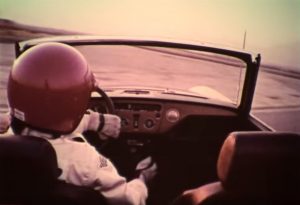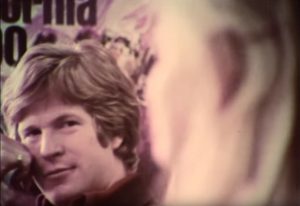Media | Articles
This thrilling Spitfire speed tutorial makes me want to drive my Triumph like a pro
The Petersen Museum may be closed to the public at the moment, but it’s doing its best to keep automotive enthusiasts entertained online. We’ve featured the museum’s educational programs for kids and a virtual tour of its vault, but the Petersen has also been rolling out vintage videos too, and some—like Craig Breedlove’s jet-powered land speed attempt to eclipse 600 mph—have never been seen before.
A little less thrilling and a whole lot slower than the Breedlove film is the Petersen’s recent release of a 11-minute 1970s feature film about a Triumph owner bringing his new Spitfire to the Bob Bondurant Racing School. As the owner of a 1967 Spitfire Mk III, I was immediately interested—particularly because, although I am well aware of Triumph’s racing history, my unmodified British machine is anything but fast.
What might I learn from this grainy footage?
School for Speed: The Making of a Race Driver is “brought to you by British Leyland, makers of the Triumph Spitfire and the TR6 sports car,” so we’re immediately treated to an amusing commercial about a pair of Spitfire 1500s, revved and ready to street race from a stoplight—until a police car pulls up alongside. “If you’re thinking about buying a Triumph Spitfire because it’s a national racing champion, don’t be contemptuous of those who buy it for its Michelotti styling … Consider the satisfaction of owning a car that looks as good going slow as it does going fast.”
Now that I can relate to.
Marketplace
Buy and sell classics with confidence
Rick, the hero of the story, arrives at California’s Ontario Motor Speedway and imagines the action on the track, the roar of the crowd, and what Bob Bondurant might be able to teach him. Bondurant, who taught James Garner and Paul Newman to become strong racers, greets the class and then hands the reins to another instructor.

Rick hits the track to learn—and practice—various basic racing techniques. His reactions feel a bit staged, and the film isn’t the slickest or sharpest, but it has its high points. I was most interested in the techniques shared on the skid pad, since the Spit’s rear end can kick around pretty quickly at speed. Or so I’ve heard. The problem is, Rick didn’t drive the Spitfire on the skid pad, he drive a Datsun, which may be why he spun out once he took the Triumph onto the track.

The film also has pure entertainment value, even if you’re not interested in becoming a racing driver. There’s a woman in the class, which at first seems progressive for the time. Then you realize that the only time you see her is in the classroom, when Rick glances over and offers her a smile, and she returns his stare with a smile of her own.
Come on, Rick, that’s no way to become a great driver, especially in a Spitfire. Focus!
There’s also a part two to the story, showing the Triumph’s conversion to a race car. The musical soundtrack is absolutely awful (sounds like a warped vinyl LP), but if you can you push past that, you’ll get a little more of Bondurant, including instructional voiceover, and see the converted Spitfire—barely recognizable from the previous video—in action.
Spoiler alert: Rick gets his SCCA license and competes at the now-defunct Riverside International Raceway. Unfortunately, he talks incessantly at times. Avoid the urge to hit the mute button and enjoy the sound of that jacked-up engine (particularly at the 6:57 mark)—nothing like the Spitfire I’m used to hearing. Of course, that may be a good thing. I get myself into enough trouble with my Spit already.
And hey, the woman from the classroom is back! Not behind the wheel, of course, but behind a camera lens, taking photos of Rick, our concurring hero. Yikes.
Before we’re done, we’re treated to a commercial for Champion Spark Plugs that features a red Spitfire climbing snowy Rocky Mountain roads. The announcer calls the car a “mountain tamer.” Pa-lease. That’s about as believable as Rick becoming an SCCA champion on his first try.
You’ll enjoy both halves of The Making of a Race Driver as long as you take the film for what it is: a great automotive distraction while we wait to get out there and drive our own classics.



